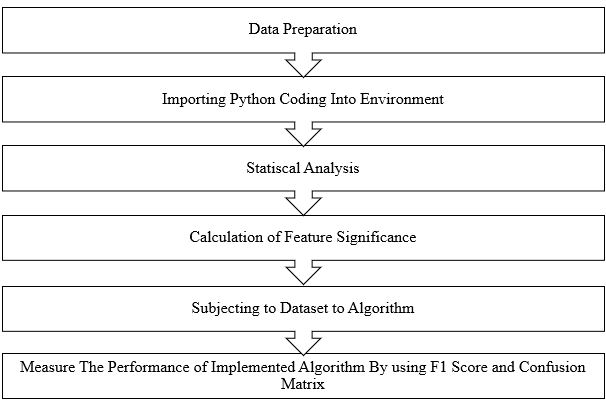Machine Learning Approach for Prediction of the Online User Intention for a Product Purchase
Main Article Content
Abstract
The deployment of self-learning computer algorithms that can automatically enhance their performance via experience is referred to as machine learning in ecommerce and is a crucial trend of the retail digital transformation. Machine learning algorithms can be unambiguously trained by analysing big datasets, identifying repeating patterns, relationships, and anomalies among all of this data, and creating mathematical models resembling such associations. These models are improved when the algorithms analyse ever-increasing amounts of data, providing us with useful insights into specific ecommerce-related events and the links between all the variables that underlie them. A tool that has been quite effective in studying current affairs, predicting future trends, and making data-driven decisions. The present work investigates the implementation of machine learning algorithms to predict the user intention for purchasing a product on a specific store's website. An Online Shoppers Purchasing Intention data set from the UC Irvine Machine Learning Repository was used for this investigation. In this study, two classification-based machine learning algorithms i.e. Stochastic Gradient Descent (SGD) algorithm and Random Forest algorithm were used. SGD algorithm was used for first time in prediction of the online user intention. The results showed that the Random Forest resulted in the highest F1-Score of 0.90 in contrast to the Stochastic Gradient Descent algorithm.
Article Details
References
Cormen, T.H., Leiserson, C.E., Rivest, R.L. and Stein, C., 2022. Introduction to algorithms. MIT press.
Tsamados, A., Aggarwal, N., Cowls, J., Morley, J., Roberts, H., Taddeo, M. and Floridi, L., 2022. The ethics of algorithms: key problems and solutions. AI & SOCIETY, 37(1), pp.215-230.
Theis, L. and Ahmed, N.Y., 2022, June. Algorithms for the Communication of Samples. In International Conference on Machine Learning (pp. 21308-21328). PMLR.
Aliramezani, M., Koch, C.R. and Shahbakhti, M., 2022. Modeling, diagnostics, optimization, and control of internal combustion engines via modern machine learning techniques: A review and future directions. Progress in Energy and Combustion Science, 88, p.100967.
Zhou, Y., Wang, J., Li, Z. and Lu, H., 2022. Short-term photovoltaic power forecasting based on signal decomposition and machine learning optimization. Energy Conversion and Management, 267, p.115944.
Senhora, F.V., Chi, H., Zhang, Y., Mirabella, L., Tang, T.L.E. and Paulino, G.H., 2022. Machine learning for topology optimization: Physics-based learning through an independent training strategy. Computer Methods in Applied Mechanics and Engineering, 398, p.115116.
Mishra, A.; Dasgupta, A. Supervised and Unsupervised Machine Learning Algorithms for Forecasting the Fracture Location in Dissimilar Friction-Stir-Welded Joints. Forecasting 2022, 4, 787-797. https://doi.org/10.3390/forecast4040043
Alswaitti, M., Siddique, K., Jiang, S., Alomoush, W. and Alrosan, A., 2022. Dimensionality Reduction, Modelling, and Optimization of Multivariate Problems Based on Machine Learning. Symmetry, 14(7), p.1282.
Mehrenjani, J.R., Gharehghani, A. and Sangesaraki, A.G., 2022. Machine learning optimization of a novel geothermal driven system with LNG heat sink for hydrogen production and liquefaction. Energy Conversion and Management, 254, p.115266.
Abualigah, L., Zitar, R.A., Almotairi, K.H., Hussein, A.M., Abd Elaziz, M., Nikoo, M.R. and Gandomi, A.H., 2022. Wind, solar, and photovoltaic renewable energy systems with and without energy storage optimization: a survey of advanced machine learning and deep learning techniques. Energies, 15(2), p.578.
Li, J., Du, X. and Martins, J.R., 2022. Machine Learning in Aerodynamic Shape Optimization. arXiv preprint arXiv:2202.07141.
Taoufik, N., Boumya, W., Elmoubarki, R., Elhalil, A., Achak, M., Abdennouri, M. and Barka, N., 2022. Experimental design, machine learning approaches for the optimization and modeling of caffeine adsorption. Materials Today Chemistry, 23, p.100732.
Wang, C. and Du, C., 2022. Optimization of physical education and training system based on machine learning and Internet of Things. Neural Computing and Applications, 34(12), pp.9273-9288.
Cheng, B., Du, J. and Yao, Y., 2022. Machine learning methods to assist structure design and optimization of Dual Darrieus Wind Turbines. Energy, 244, p.122643.
Mishra A, Morisetty R. Determination of the Ultimate Tensile Strength (UTS) of friction stir welded similar AA6061 joints by using supervised machine learning based algorithms. Manufacturing Letters. 2022 Apr 1;32:83-6.
Bhakta, K., Camargo, J., Donovan, L., Herrin, K. and Young, A., 2020. Machine learning model comparisons of user independent & dependent intent recognition systems for powered prostheses. IEEE Robotics and Automation Letters, 5(4), pp.5393-5400.
Khattak, A., Habib, A., Asghar, M.Z., Subhan, F., Razzak, I. and Habib, A., 2021. Applying deep neural networks for user intention identification. Soft Computing, 25(3), pp.2191-2220.
Kliestik, T., Zvarikova, K. and L?z?roiu, G., 2022. Data-driven machine learning and neural network algorithms in the retailing environment: Consumer engagement, experience, and purchase behaviors. Economics, Management and Financial Markets, 17(1), pp.57-69.
Qu, C., Yang, L., Croft, W.B., Zhang, Y., Trippas, J.R. and Qiu, M., 2019, March. User intent prediction in information-seeking conversations. In Proceedings of the 2019 Conference on Human Information Interaction and Retrieval (pp. 25-33).
Figueroa, A., 2015. Exploring effective features for recognizing the user intent behind web queries. Computers in Industry, 68, pp.162-169.
Chen, Z., Lin, F., Liu, H., Liu, Y., Ma, W.Y. and Wenyin, L., 2002. User intention modeling in web applications using data mining. World Wide Web, 5(3), pp.181-191.
Prasad N. Achyutha, Sushovan Chaudhury, Subhas Chandra Bose, Rajnish Kler, Jyoti Surve, Karthikeyan Kaliyaperumal, "User Classification and Stock Market-Based Recommendation Engine Based on Machine Learning and Twitter Analysis", Mathematical Problems in Engineering, vol. 2022, Article ID 4644855, 9 pages, 2022. https://doi.org/10.1155/2022/4644855

